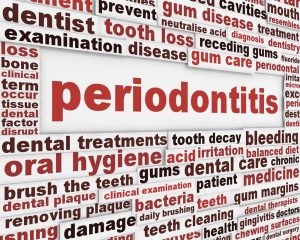What Is Gingivitis?
Gingivitis is a non-destructive periodontal disease which occurs around the teeth generally due to the accumulation or attachment of bacterial biofilms to the tooth surfaces. This attaching of bacterial biofilms is the most common form of gingivitis and is termed as plaque-induced gingivitis.
In some severe cases, gingivitis can also lead to periodontitis, but it is not that common. These severe cases occur when gingivitis is not treated on time or is not treated properly. Correct and within-the-time treatment with good oral hygiene can stop the progress of gingivitis. Gingivitis is reversible, i.e., it can be cured.

Without treatment, Gingivitis can cause the inflammation of gums which in turn leads to the destruction of bone as well as bone resorption around the teeth. The term gingivitis means “inflammation of gum tissue” thus describing the damage caused. The ultimate damage due to gingivitis is tooth loss.
Gingivitis is the 1st stage of gum disease hence it should be treated to stop the further loss. It is easy to treat since the bone, and connective tissue that holds the teeth in place are not yet affected. But the condition should be considered as a serious one and must be paid medical attention immediately.
How Is Gingivitis Caused?
As the name (plaque-induced gingivitis) describes it is caused by, bacterial plaque, the main villain in the story. Bacterial plaque initiates the body’s host response which can lead to the destruction of periodontal attachment apparatus.
This plaque accumulates in gaps present between the teeth, gingival grooves and plaque traps. Plaque traps are the locations that readily accumulate and maintain plaque such as large and overhanging restorative margins, caps of removable partial dentures and tartar that forms on teeth.
Bacteria in plaque then produce chemicals such as degradative enzymes, toxins (LPS- Lipopolysaccharide, LTA- lipoteichoic acid). These chemicals caused an inflammatory response in the gum tissue thus enlarging the gingiva and also subsequent formation.
What Plaque Consists Of?
Initially, plaque consists of Gram-positive cocci and rods as the major part of it. Overtime as the plaque matures and starts developing gingivitis, the complex composition of Gram-negative rods, fusiform, filaments, spirilla, and spirochetes.
How To Know That The Gingivitis Has Started To Form?
There are only a few signs and symptoms of gingivitis which are non-specific. They are generally associated with gum tissue as the signs of inflammation. Some of them are:
- Swollen gums are common for the patients of gingivitis.
- The gums turn bright red or purple.
- Gums turn weak and sensitive. They are tender or painful when touched.
- Gums bleed more than normal when teeth are brushed or flossed.
- Halitosis (bad breath). In gingivitis, it happens even if your mouth is not dry.
- Stippling of gum tissues will disappear.
- Gums appear shiny as it is swollen and stretched over the inflamed underlying connective tissue.

How To Prevent The Formation Of Gingivitis?
Some of the methods of prevention are:
- Regular oral hygiene of brushing twice a day and flossing can help to help to prevent the gingivitis.
- Usage of mouthwashes which contain hydrogen peroxide, saline, alcohol or chlorhexidine.
- Accumulation of plaque may be reduced by using the oscillation-type brushes as its bristles can reach the smaller gaps in between the teeth thus cleaning the teeth thoroughly.
- Plaque control programs, periodontal scaling, and root planning are also helpful to prevent gingivitis.
- Toothpaste containing triclosan is also found to be effective.
- Eating a well-balanced diet that can help to maintain strong teeth and bones.
- Avoid smoking and consumption of other forms of tobacco.
What Are The Treatments Available For Gingivitis?
Some of the treatments for gingivitis are:
- Regular visits to a dentist and oral hygiene care at home together is the basic treatment for gingivitis.
- Scaling, root planning, and curettage are some of the treatment involved.
- Interdental brushes and powered toothbrushes are recommended by many dentists instead of manual toothbrushes to reduce the disease.
- Triclosan, chlorhexidine digluconate, and a combination of thymol, menthol, eucalyptol, and methyl salicylate are some of the active ingredients that reduce and demonstrate effective reduction of gingival inflammation. Dr. Brady Bates, an expert Spokane Dentist, highly recommends the use of toothpaste and mouthwash containing hydrogen peroxide along with the above ingredients.
- Fluoridated hydrogen peroxide-based mouth rinse is found to remove teeth stain thereby reducing gingivitis.
- Amoxicillin, cephalexin or minocycline in 16 ounces of a non-alcoholic fluoride mouthwash form an effective mixture which can treat gingivitis.
Important Article: What Are Canker Sores?
So eventually what we need to do is maintain the oral hygiene and have a well-balanced diet to get rid of all these dental diseases, especially gingivitis.

